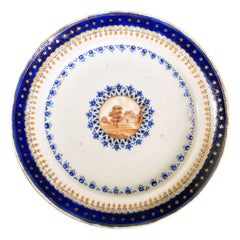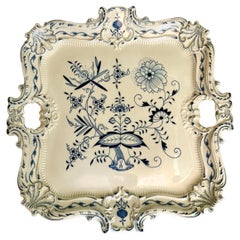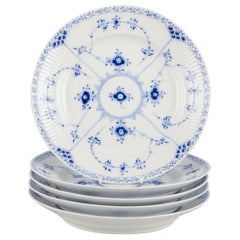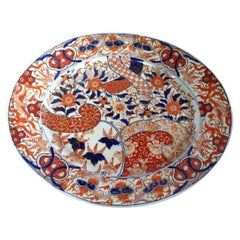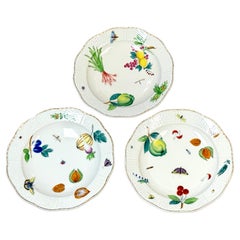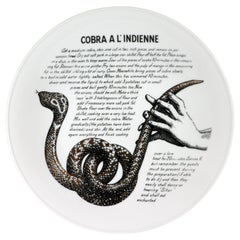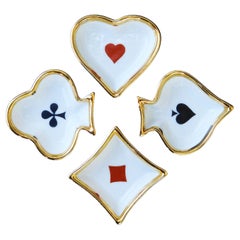Porcelain
Mid-19th Century Japanese Edo Antique Porcelain
Porcelain
19th Century European Baroque Antique Porcelain
Porcelain
Late 19th Century German Louis XV Antique Porcelain
Porcelain
Mid-20th Century Italian Mid-Century Modern Porcelain
Ceramic, Porcelain
1960s Italian Mid-Century Modern Vintage Porcelain
Ceramic, Porcelain
Mid-20th Century French Mid-Century Modern Porcelain
Porcelain
1920s French Art Deco Vintage Porcelain
Porcelain
2010s Italian Porcelain
Porcelain
1920s French Belle Époque Vintage Porcelain
Porcelain
Late 20th Century Italian Chinoiserie Porcelain
Porcelain
Mid-20th Century Northern Irish Mid-Century Modern Porcelain
Porcelain
Mid-20th Century Italian Mid-Century Modern Porcelain
Ceramic, Porcelain
Late 20th Century European Porcelain
Porcelain
Late 19th Century French Belle Époque Antique Porcelain
Brass
20th Century Hungarian Porcelain
Porcelain
Early 20th Century English Art Nouveau Porcelain
Luster, Porcelain
Mid-20th Century Italian Chinoiserie Porcelain
Porcelain
1960s Hungarian Vintage Porcelain
Porcelain
1880s French Arts and Crafts Antique Porcelain
Porcelain
1880s French Arts and Crafts Antique Porcelain
Porcelain
1980s German Mid-Century Modern Vintage Porcelain
Porcelain
1980s French Art Deco Vintage Porcelain
Porcelain
1980s German Mid-Century Modern Vintage Porcelain
Porcelain
1980s German Mid-Century Modern Vintage Porcelain
Porcelain
Mid-20th Century Italian Mid-Century Modern Porcelain
Gold Leaf
Mid-20th Century Italian Art Deco Porcelain
Porcelain
Mid-20th Century Italian Mid-Century Modern Porcelain
Gold Leaf
Late 20th Century German Mid-Century Modern Porcelain
Porcelain
19th Century German Rococo Revival Antique Porcelain
Porcelain
Late 19th Century European Art Nouveau Antique Porcelain
Porcelain
20th Century European Porcelain
Porcelain
20th Century Italian Post-Modern Porcelain
Silver
19th Century Chinese Chinese Export Antique Porcelain
Porcelain
1980s German Vintage Porcelain
Porcelain
1960s German Modern Vintage Porcelain
Porcelain
20th Century Spanish Mid-Century Modern Porcelain
Ceramic
1820s English Regency Antique Porcelain
Porcelain
20th Century Spanish Mid-Century Modern Porcelain
Porcelain
1930s German Vintage Porcelain
Porcelain
1890s French Belle Époque Antique Porcelain
Porcelain
20th Century French French Provincial Porcelain
Porcelain
19th Century French Country Antique Porcelain
Porcelain
21st Century and Contemporary Italian Other Porcelain
Porcelain
Early 19th Century English Regency Antique Porcelain
Ceramic
1890s French Napoleon III Antique Porcelain
Brass
21st Century and Contemporary Italian Other Porcelain
Porcelain
20th Century Hungarian Porcelain
Porcelain
20th Century German Romantic Porcelain
Porcelain
1920s English Art Deco Vintage Porcelain
Silver
Mid-20th Century Italian Country Porcelain
Ceramic, Porcelain
Early 19th Century English Neoclassical Antique Porcelain
Porcelain
1980s German Mid-Century Modern Vintage Porcelain
Porcelain
20th Century Danish Porcelain
Porcelain
1960s Danish Vintage Porcelain
Porcelain
1910s English Rococo Vintage Porcelain
Porcelain
20th Century Hungarian Porcelain
Porcelain
20th Century Danish Neoclassical Porcelain
Porcelain
20th Century Hungarian Porcelain
Stoneware
Late 18th Century German Neoclassical Antique Porcelain
Porcelain
Mid-20th Century French Porcelain
Glass, Ceramic, Porcelain
Antique and Vintage Porcelain Dinner Plates, Platters and Serveware for Sale
Today you’re likely to bring out your antique and vintage porcelain in order to dress up your dining table for a special meal.
Porcelain, a durable and nonporous kind of pottery made from clay and stone, was first made in China and spread across the world owing to the trade routes to the Far East established by Dutch and Portuguese merchants. Given its origin, English speakers called porcelain “fine china,” an expression you still might hear today. "Fine" indeed — for over a thousand years, it has been a highly sought-after material.
Meissen Porcelain, one of the first factories to create real porcelain outside Asia, popularized figurine centerpieces during the 18th century in Germany, while works by Capodimonte, a porcelain factory in Italy, are synonymous with flowers and notoriously hard to come by. Modern porcelain houses such as Maison Fragile of Limoges, France — long a hub of private porcelain manufacturing — keep the city’s long tradition alive while collaborating with venturesome contemporary artists such as illustrator Jean-Michel Tixier.
Porcelain is not totally clumsy-guest-proof, but it is surprisingly durable and easy to clean. Its low permeability and hardness have rendered porcelain wares a staple in kitchens and dining rooms as well as a common material for bathroom sinks and dental veneers. While it is tempting to store your porcelain behind closed glass cabinet doors and reserve it only for display, your porcelain dinner plates and serving platters can safely weather the “dangers” of the dining room and be used during meals.
Add different textures and colors to your table with dinner plates and pitchers of ceramic and silver or a porcelain lidded tureen, a serving dish with side handles that is often used for soups. Although porcelain and ceramic are both made in a kiln, porcelain is made with more refined clay and is stronger than ceramic because it is denser.
On 1stDibs, browse an expansive collection of antique and vintage porcelain made in a variety of styles, including Regency, Scandinavian modern and other examples produced during the mid-century era, plus Rococo, which found its inspiration in nature and saw potters crafting animal figurines and integrating organic motifs such as floral patterns in their work.


